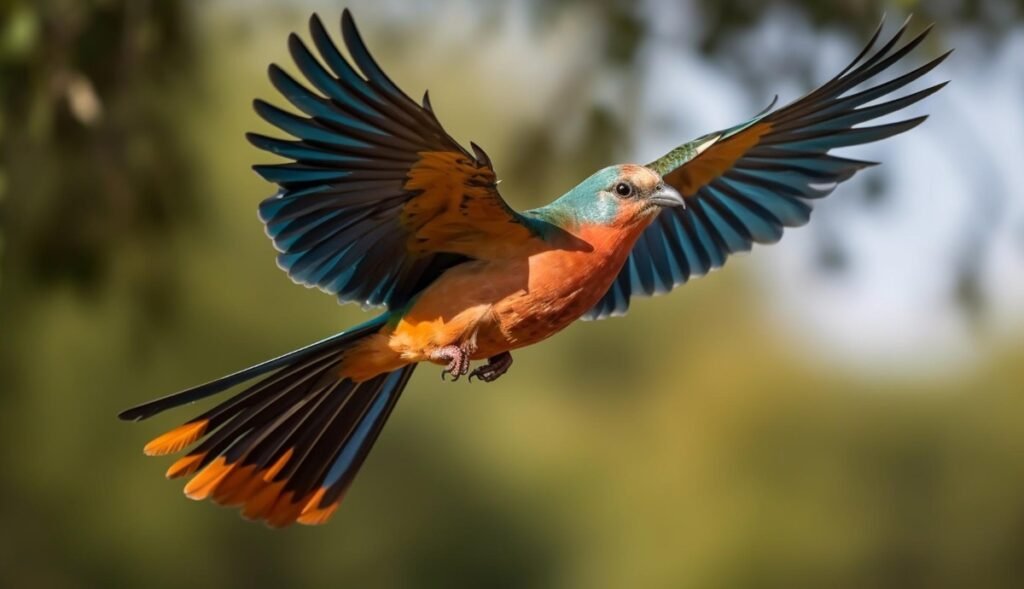Understanding how birds die is crucial for various reasons. It provides insights into their lifespan, health, and the factors that can impact their survival. By studying mortality patterns in birds, researchers can gain valuable information about ecological balance, disease outbreaks, and the effects of environmental changes on avian populations.
Overview
Birds, like all living organisms, have a finite lifespan. Their mortality can be influenced by a multitude of factors, ranging from natural causes to human-induced threats.
Natural Causes of Mortality
Several natural factors contribute to bird deaths. These include:
- Predation: Birds are preyed upon by a variety of animals, such as snakes, cats, hawks, and owls.
- Disease: Avian diseases can spread rapidly within bird populations, leading to significant mortality.
- Starvation: Lack of food resources, particularly during harsh winters or droughts, can result in starvation.
- Inclement Weather: Extreme weather events, such as storms, floods, and heat waves, can pose a serious threat to bird survival.
- Old Age: As birds age, they become more susceptible to diseases and other health problems.
Human-Induced Threats
Human activities have a significant impact on bird mortality. Some of the major threats include:
- Habitat Loss: The destruction and fragmentation of bird habitats due to deforestation, urbanization, and agriculture are leading causes of death.
- Climate Change: Global warming is altering bird migration patterns, breeding seasons, and food availability, increasing mortality rates.
- Pollution: Air, water, and soil pollution can poison birds or contaminate their food sources.
- Collisions with Structures: Birds often collide with buildings, windows, and power lines, resulting in injuries or death.
- Hunting and Trapping: Overhunting and illegal trapping can decimate bird populations.
How Do Birds Die?
Birds, like all living creatures, have a finite lifespan. While their average lifespans vary greatly depending on species, all birds eventually succumb to the natural processes of aging and mortality. Understanding how birds die can provide insights into their biology, ecology, and the challenges they face in a constantly changing world.
Natural Causes of Bird Death
The majority of bird deaths are attributed to natural causes, which encompass a wide range of factors:
Aging
Just as in humans, the aging process takes its toll on birds over time. Their organs gradually wear down, making them more susceptible to diseases and injuries. Older birds may also experience a decline in their ability to find food, escape predators, and raise young successfully.
Disease
Birds are susceptible to a variety of diseases, both infectious and non-infectious. (See Also: What Does It Mean When You See Dead Birds)
- Infectious diseases, such as avian influenza, West Nile virus, and avian pox, can spread rapidly through bird populations, causing widespread mortality.
- Non-infectious diseases, such as tumors, organ failure, and metabolic disorders, can also contribute to bird deaths.
Environmental factors, such as habitat loss, pollution, and climate change, can weaken birds’ immune systems, making them more vulnerable to disease.
Predation
Birds are a vital part of the food chain, and many species are preyed upon by other animals.
- Mammals, such as cats, foxes, and raccoons, are common bird predators.
- Reptiles, such as snakes and lizards, also prey on birds.
- Birds of prey, such as hawks, owls, and eagles, are specialized bird hunters.
The effectiveness of a bird’s defenses, such as camouflage, flight ability, and warning calls, plays a crucial role in its survival.
Starvation
Food scarcity can be a major cause of bird death, especially during periods of drought, habitat loss, or competition for resources. Birds may struggle to find enough food to meet their energy needs, leading to malnutrition and death.
Inclement Weather
Extreme weather events, such as hurricanes, blizzards, and heat waves, can pose significant threats to birds. They may be unable to find shelter, food, or water during these events, leading to exhaustion, hypothermia, or dehydration.
Human-Induced Causes of Bird Death
In addition to natural causes, human activities have a profound impact on bird populations worldwide.
Habitat Loss and Degradation
The conversion of natural habitats into agricultural land, urban areas, and infrastructure projects is a leading cause of bird death. Habitat loss reduces the availability of nesting sites, foraging areas, and migration corridors, leading to population declines.
Pollution
Air, water, and soil pollution can have devastating effects on birds. (See Also: What Is Ataxia In Birds)
- Pesticides and herbicides can poison birds directly or indirectly by contaminating their food sources.
- Oil spills can kill birds through direct contact or by contaminating their feathers, making them unable to fly or regulate their body temperature.
- Plastic pollution can entangle birds or be ingested, leading to internal injuries or starvation.
Climate Change
Climate change is altering weather patterns, sea levels, and ecosystems, posing significant threats to bird populations. Birds may be forced to migrate earlier or later, face changes in food availability, or experience habitat loss due to rising sea levels or extreme weather events.
Window Collisions
Birds often collide with windows, mistaking them for reflections of the sky or trees. These collisions can result in serious injuries or death, particularly for migratory birds.
Cat Predation
Domestic cats are a significant threat to bird populations, both in urban and rural areas. Cats can kill large numbers of birds, especially ground-nesting species and small songbirds.
Signs of Illness or Distress in Birds
Observing changes in a bird’s behavior or appearance can provide clues about its health status.
- Lethargy or weakness: A bird that is unusually inactive or unable to fly may be sick or injured.
- Ruffled feathers: Birds may fluff their feathers to conserve heat or when they are feeling stressed or ill.
- Discharge from the eyes, nose, or mouth: This can be a sign of infection or respiratory illness.
- Difficulty breathing or gasping for air: This can indicate respiratory distress.
- Loss of appetite or weight loss: A bird that is not eating or drinking may be dehydrated or have a medical condition.
If you notice any of these signs in a bird, it is important to contact a qualified wildlife rehabilitator or veterinarian for assistance.
Conclusion
Understanding how birds die is essential for conservation efforts and ensuring the well-being of these fascinating creatures. Natural causes, such as aging, disease, predation, and starvation, play a role in regulating bird populations. However, human activities, including habitat loss, pollution, climate change, and window collisions, pose significant threats to bird survival. By recognizing the factors that contribute to bird deaths and taking steps to mitigate these threats, we can help protect these vital members of our ecosystems.
Frequently Asked Questions About Bird Mortality
What are the most common causes of death for birds?
Birds, like all living creatures, are susceptible to a variety of causes of death. Some of the most common include predation by other animals, disease, starvation, habitat loss, and collisions with vehicles or buildings. (See Also: Why Are Birds Called Tits)
Can birds die from stress?
Yes, birds can die from stress. Prolonged exposure to stressful situations, such as overcrowding, loud noises, or changes in their environment, can weaken their immune systems and make them more vulnerable to disease.
How can I tell if a bird has died of natural causes?
It can be difficult to determine the exact cause of death for a bird without a veterinary examination. However, some signs that a bird may have died of natural causes include a lack of movement, no response to stimuli, and a normal appearance.
What should I do if I find a dead bird?
If you find a dead bird, it’s best to leave it alone unless it poses a health hazard. You can contact your local animal control or wildlife agency for advice on how to safely dispose of the bird.
Are there any ways to help prevent bird deaths?
Yes, there are several things you can do to help prevent bird deaths. These include providing food and water sources, creating safe nesting areas, reducing the use of pesticides, and being aware of potential hazards such as windows and power lines.


